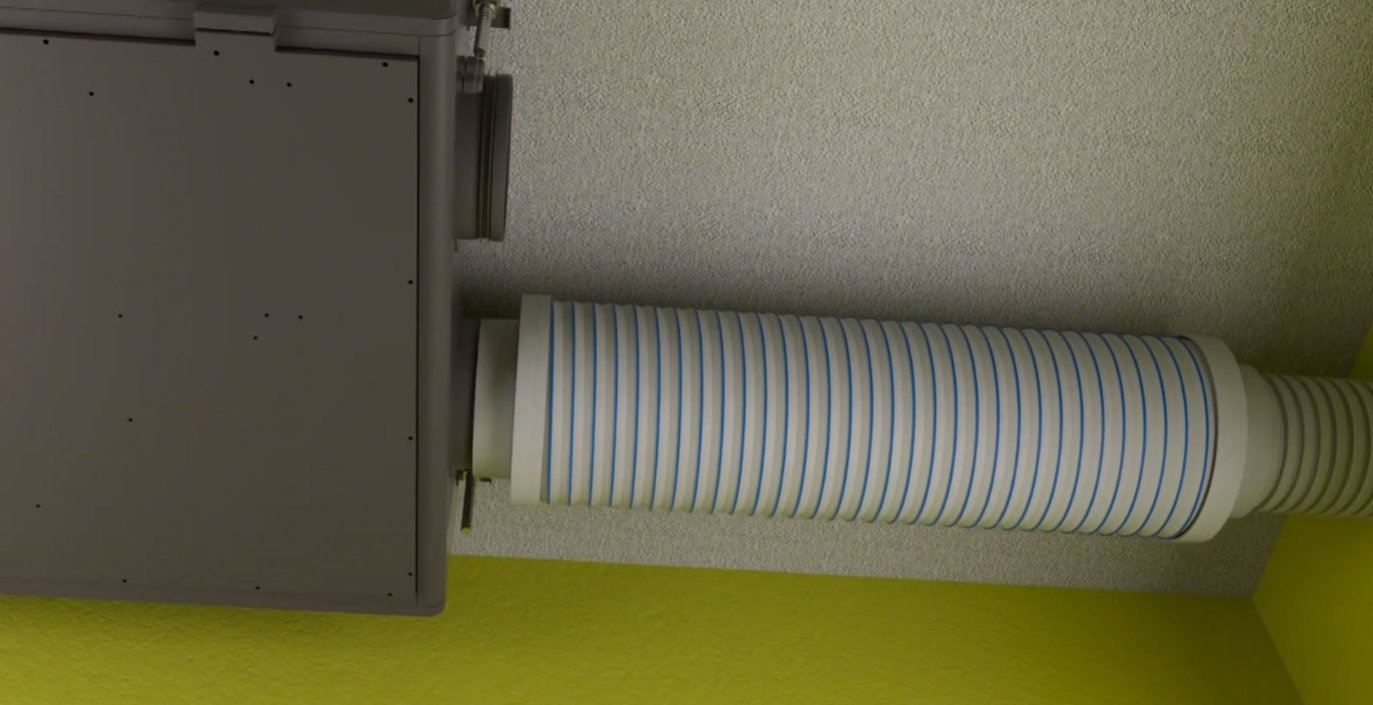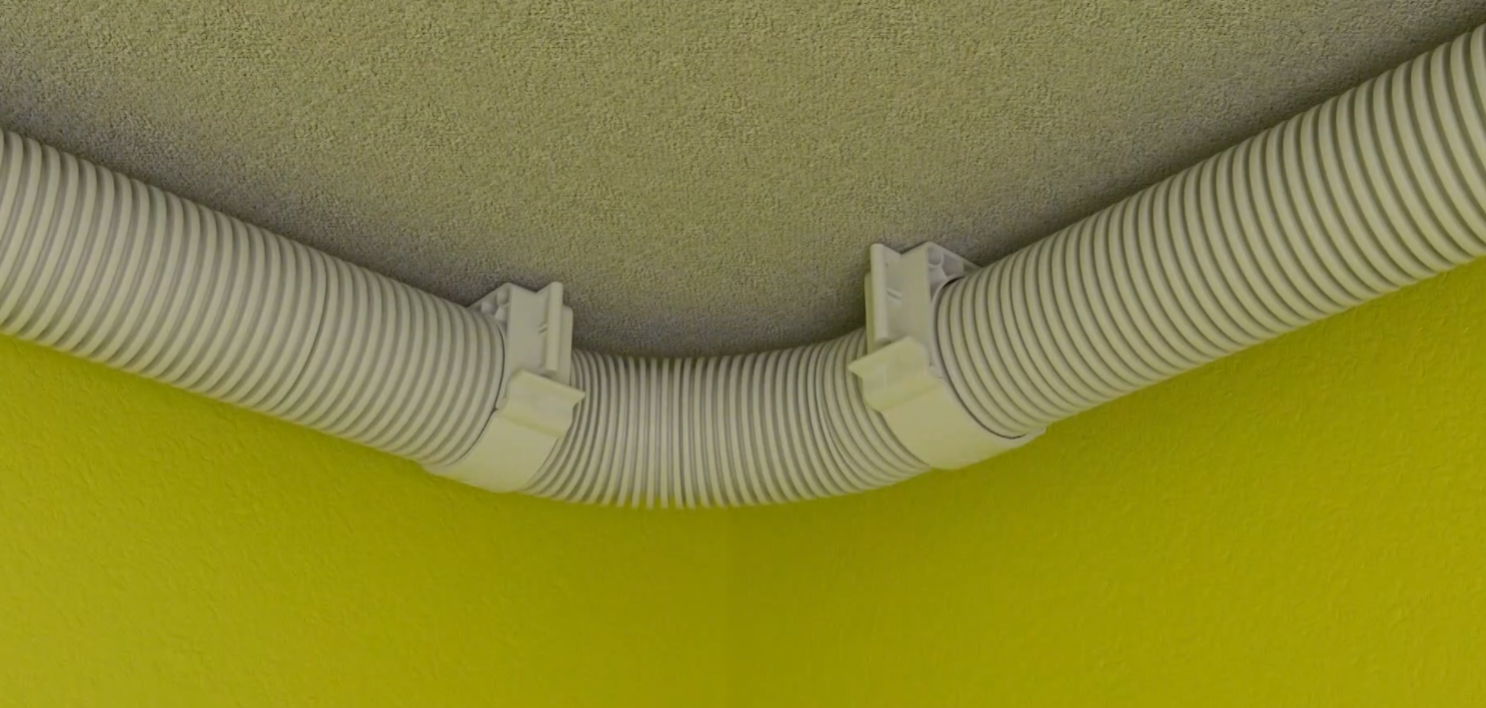Installing Ducts and Outlets
Basic Installation Requirements
1.1 When using flexible ducts for connecting outlets, their length should ideally not exceed 35cm to ensure optimal performance.
1.2 For exhaust ducts employing flexible tubing, the maximum length should be limited to 5 meters. Beyond this length, PVC ducts are recommended for better efficiency and durability.
1.3 The routing of ducts, their diameters, and the installation locations of outlets must strictly adhere to the specifications outlined in the design drawings.

1.4 Ensure that the cut edges of tubing are smooth and free from burrs. Connections between pipes and fittings should be securely riveted or glued, leaving no residual glue on the surfaces.
1.5 Install ducts horizontally level and vertically plumb to maintain structural integrity and efficient airflow. Ensure the inner diameter of the tubing is clean and free from debris.
1.6 PVC ducts must be supported and fastened using brackets or hangers. If clamps are used, their inner surfaces should be tightly against the outer wall of the pipe. Mounts and brackets should be firmly fixed to the ducts, without any signs of loosening.

1.7 Branches of the ductwork should be fixed at intervals, and these intervals should conform to the following standards if not specified in the design:
- For horizontal ducts, with diameters ranging from 75mm to 125mm, a fixation point should be placed every 1.2 meters. For diameters between 160mm and 250mm, fix every 1.6 meters. For diameters exceeding 250mm, fix every 2 meters. Additionally, both ends of elbows, couplings, and tee joints should have a fixation point within 200mm of the connection.
- For vertical ducts, with diameters between 200mm and 250mm, fix every 3 meters. For diameters exceeding 250mm, fix every 2 meters. Similar to horizontal ducts, both ends of connections require fixation points within 200mm.
Flexible metallic or non-metallic ducts should not exceed 5 meters in length and must be free from sharp bends or collapses.
1.8 After installing ducts through walls or floors, meticulously seal and repair any gaps to prevent air leaks and ensure structural integrity.

By adhering to these detailed installation guidelines, you can ensure the proper functioning and longevity of your residential fresh air ventilation system, including domestic heat recovery ventilation (DHRV) and whole house heat recovery ventilation system (WHRVS), providing clean, efficient, and temperature-controlled air throughout your home.
Post time: Aug-28-2024






